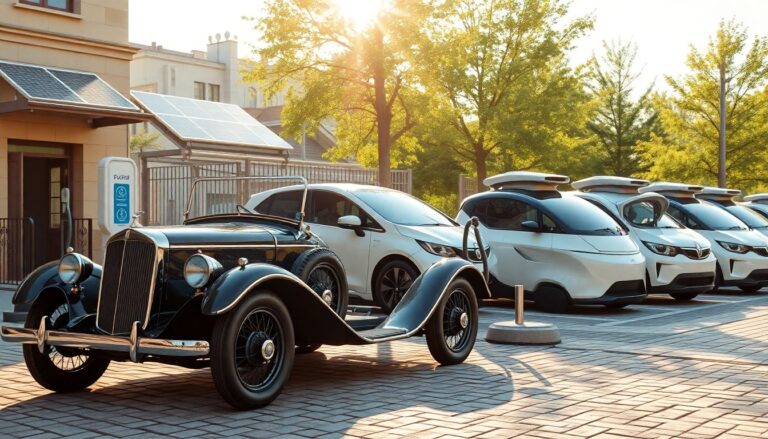Argomenti trattati
The automotive industry has experienced a profound transformation over the last century. From the invention of the automobile to today’s electric vehicles (EVs), each developmental phase has introduced innovations that have substantially changed our driving experience. This evolution not only underscores technological achievements but also offers insights into future advancements.
The early days of automotive innovation
The journey of automotive technology began in the late 19th century with the introduction of the internal combustion engine. Pioneers like Karl Benz and Henry Ford revolutionized transportation, making automobiles accessible to the masses. The introduction of mass production techniques, particularly the assembly line, enabled efficient manufacturing, drastically reducing costs and making cars affordable for the general public.
Key innovations of the early 20th century
Several critical innovations during this period laid the groundwork for the modern automobile. The introduction of the electric starter eliminated the need for hand cranking, thus enhancing safety and convenience. Additionally, advancements in automotive design led to more streamlined shapes and improved aerodynamics, boosting both performance and fuel efficiency.
Technological advancements in the mid to late 20th century
As the 20th century progressed, the automotive sector continued to evolve, particularly with significant technological innovations. The introduction of electronic fuel injection systems in the 1960s and 70s marked a pivotal shift in vehicle fuel management and emissions control. Fuel efficiency became a priority, especially during the oil crisis of the 1970s, prompting manufacturers to develop smaller, more energy-efficient vehicles.
The rise of computer technology in vehicles
The incorporation of computer technology into automotive engineering further transformed the industry. By the 1980s, vehicles featured on-board diagnostics (OBD) systems, which allowed for improved monitoring of performance and emissions. This advancement not only enhanced vehicle efficiency but also facilitated the development of sophisticated safety features, such as anti-lock braking systems (ABS) and traction control.
The modern era: electric and autonomous vehicles
Currently, the automotive industry is undergoing unprecedented changes driven by sustainability and technological innovation. The rise of electric vehicles (EVs) is reshaping the market landscape, with companies like Tesla at the forefront. EVs reduce reliance on fossil fuels and promise lower operational costs due to fewer moving parts and reduced maintenance needs.
Autonomous driving technology
In addition to electric vehicles, the quest for autonomous driving technology is garnering significant attention from both manufacturers and consumers. Advances in artificial intelligence (AI) and machine learning are enabling vehicles to navigate roads, avoid obstacles, and even communicate with one another. This technology has the potential to drastically reduce traffic accidents and enhance overall road safety.
The future of automotive technology
Looking ahead, the automotive industry is poised to embrace even more groundbreaking technologies. Innovations like vehicle-to-everything (V2X) communication, which allows vehicles to interact with their environment, and advancements in battery technology for EVs promise a new era of efficiency and connectivity.
Moreover, the pursuit of sustainability is encouraging manufacturers to explore alternative materials and production methods to minimize environmental impact while maximizing efficiency. The integration of renewable energy sources into vehicle charging infrastructures further bolsters the transition toward greener transportation solutions.
In conclusion, the evolution of automotive technology stands as a testament to human ingenuity and perseverance. From early innovations to the current emphasis on sustainability and automation, each developmental phase has significantly influenced our driving experience. As we continue to embrace change and innovation, the future of the automotive industry appears brighter than ever.

